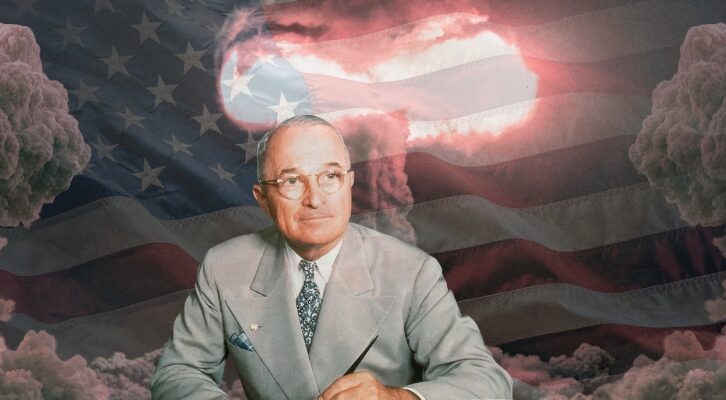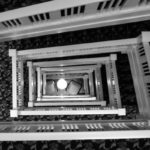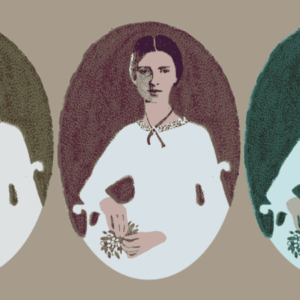
Neel Mukherjee: Fiction Must Be a Quarrel with the Times
The author of A State of Freedom in conversation with Hanya Yanagihara
Hanya Yanagihara: Well, I suppose I’m going to begin with the obvious. Your brilliant novel is—in title, structure, and fury—deliberately in conversation with V. S. Naipaul’s In a Free State. Will you talk a little about how and why your novel is a response to his?
Neel Mukherjee: Thank you so much for your intelligent, warm and generous response to A State of Freedom. Yes, you’re absolutely correct: it is a conversation with V. S. Naipaul’s 1971 masterpiece, In a Free State.
One of the most salient features of literature as I see it is that all writing is a conversation with writing that has gone before. Naipaul’s work is never far from my thoughts—I think of him as one of the greatest novelists of the last century—but I don’t know why it should have been this particular novel of his which started pushing its way up to the surface from somewhere deep down in my self.
As I began writing A State of Freedom, I was thinking of writing something that would experiment with form; more specifically, with the elements that are normally considered crucial to coherence in the realist novel—such as plot, character, continuity—and thinking whether we could do away with all those and still have something that could answer to the name of “novel.” In other words, what if all the connective tissue was taken out—could a narrative still cohere by other means such as, say, metaphorical underpinnings, or meaning? Could discrete parts make a sum without the simple method of scalar addition?
Naipaul did exactly that, although with some contestation, in In a Free State. Subtitled “A novel with two supporting narratives,” it features the eponymous novella, two stories which he calls “supporting documents,” and the bookends of a prologue and an epilogue; so, accurately, “a novel with four supporting narratives.” It results in a formally original and dazzling book, over and above being a remarkable, clear-eyed, truthful and brutal meditation on exile and displacement. Because form seems to have historically been considered—and is still seen as—a White Guy’s thing, and because Naipaul never strayed from the realist mode, In a Free State was never acknowledged for its pushing at the boundaries of form.
Rereading In a Free State, I was struck by how its revolutionary nature still remains untarnished, and so I had the idea of attempting a tribute, a conversation, which would have as its jumping-off point the set of questions about realism and its cohering principles that I mentioned earlier. At the end of the arc—to pursue the jumping metaphor—I wanted to land at a point where realism has been made to accommodate something that is its generic opposite, such as the ghost story, while keeping what is commonly understood as realist content intact. In other words, a Trojan horse of realism. I wanted to continue the thinking about realism that I had begun with my previous novel, The Lives of Others, and continue to push the realist form in another direction or, to put it slightly differently, bring another set of torsions and pressures to bear upon it to see if it could yield something new.
“One of the most salient features of literature as I see it is that all writing is a conversation with writing that has gone before.“
HY: I do think you’ve created a chimeric book, something that truly pushes the form into what one might consider a kind of molecular-level mutation of what a novel is. Along with alluding to the structural liberties of Naipaul’s book, I also sensed a kind of echo in your book’s sheer propulsiveness, in its expressions of anger through the rhythms of language itself (the final section, which is utterly breathtaking—I was gasping as I read it—is a good example of this).
Could you talk a little about the different voices and linguistic patterns you used here for the different sections? Also, I’d like you to tell me more about the allegorical quality of the book. Each of these sections could be read as allegories . . . and yet they also feel equally, completely rooted in a natural realism tradition. How conscious were you of that balance? Also, I have a theory that the word “allegorical” is applied, lazily, to stories about poor, dark people living in circumstances that we in the West call “impossible” simply because we’ve never seen them. What are your thoughts on that?
NM: Yes, it was very clear to me from the beginning that each of the five sections composing A State of Freedom had to be written in a different style, a different voice. One of them, Section II, is narrated in the first-person, so all I had to do was give the narrator a style befitting his Western-educated, Indian-born, London-living, liberal position.
The other four sections are mostly done in a combination of omniscient narration and free indirect discourse, with the distance between the central characters’ minds and points of view increasing or decreasing with the flow of the narrative, with the final section done in a free indirect discourse that cleaves as closely to the character’s consciousness as possible. Sections III and IV are stylistically simpler—or cleaner, if you will—on the surface than Sections I and II. Part of the reason for this variety is organically dictated by the material of the stories, the people and the social contexts and stations they feature, but part of it is also motivated by a desire for variety, to mark off distinct and discrete sections in what is a suite of narratives.
As for the allegorical feel to some of the sections, that is something surprising: I didn’t aim for that effect, so I would imagine that it is the surplus that good readers or intelligent criticism always adds to a text. But it was part of my project to gesture as subtly as I could to a world over and above and beyond the one that is “completely rooted in a natural realism tradition.”
Your final point about a certain Western shortfall of imagination and understanding is one that could keep us here for ages; I don’t even know where to begin on that point. Being a writer from India has always already imprisoned me in a box called “Indian,” with all that that term and its associations entail.
So, for example, no one is going to even think about experimentation with form when reading my work. On the other hand, stable, self-satisfied, first-world societies, which think they have reached “the end of history,” consider relationship dramas, divorce, adultery, and the endlessly fascinating self (of course), as the only worthwhile subjects of the novel. Oh, and it must fetishize the sentence! Now that history is having the last laugh in the West, there is much hand-wringing going on about how the novel must return to society and politics and history. LOL, as the kids say.
HY: Let’s open that box labeled “Indian” for a moment. One of the things I found most startling, most bracing, about this book was its fury, its horror-show quality: Sections I, III and V, in particular, feel shadowed, as one experiences a nightmare. It is a fiction about how grotesque inequities of money and power make grotesqueries of humans, how they deform humanity. It is, to this reader at least, a book about contemporary India and its rot, as much as it’s also about language and linkage. What, then, is the role of India in your novel?
NM: Yes, you’re right—on a fundamental and important level, it is a book about India. (A side point: If you’re a novelist and born and raised in India, I think you are going to be in material for the rest of your life; it’s a great gift that country gives you.) For a country which has such a long history, it seems to be forever in a process of flux, forever unsettled, in a ferment. I’ve said this before and I think it bears repeating: India is always in a state of becoming instead of having a fixed state of being; a vast, seething, dense, pluralistic process. Nowhere is this clearer than on the most basic—and most important—constituent level of its people. A hunger marks them: the hunger for a better life, if not for themselves, then for their children.
That always-burning desire to be somewhere better, to have something better, the thirst for elsewhere—look closely at that desire for elsewhere and a shape and content emerge for what the here and now is. The more conventional part of my interest was in looking at the “here,” and the conditions of the here that give rise to the desire for anything that might effect an escape, some chance that will take people out of the dismal, hopeless cul-de-sac of their lives and give them other possibilities.
The more interesting thing—at least for me—that I attempted to do was to parse all those ideas of unsettlement, of elsewhere, of moving from one life to another, and create a counterpoint to the hardcore realism of the book. What is a ghost if not a being in transit, a result of unsuccessful migration? What is a ghost story if not a narrative of an unsettled history?
All of us dwell in possibility. In India, more than any other country I know, that holds especially true. And both end points of possibility are equally true of a life in India—to make something of your life or to have your life come to nothing pursuing possibilities. This book is a look at both outcomes.
“India is always in a state of becoming instead of having a fixed state of being; a vast, seething, dense, pluralistic process.”
HY: Well, that is beautifully (and truly) stated. And you’re very right: nowhere but in India, perhaps, is one more aware that one (even as a visitor) is a participant in a giant, billion-stranded, millennia-old, contradictory plot—the entire country is a palimpsest, and it can at times feel that everything you’re experiencing is being written in sand, to be blown away within minutes or hours. I feel the same way, to some extent, about being an American writer, but America is a very young country and India is a very old one, which means it’s been ensnared in the apparently endless process of its own becoming for thousands of years.
But I want to switch topics now and talk about the book’s wonderful unfinished quality. How much did you struggle over the amount of connective tissue you wanted to include . . . and how much you wanted to leave unsaid? I always admire books that make good use of absences, and by writers who resist the temptation to overexplain. Was that a challenge here?
NM: Yes, it’s an odd state, both liberating and ensnaring simultaneously. On the unfinished quality and the amount left out: to be honest, I don’t know how much of it was by design, and how much the result of serendipity. Sure, I took decisions on a micro level about the joining and the fitting—the carpentry side of writing, which I enjoy enormously—and planned carefully the internal system of assonances, rhythms, echoes, resonances, repetitions on which the book depends so much. But writing, as you well know, is nine parts instinct, I feel; and I was fortunate in that the book fell into my head, structure and themes and all.
There are things that I didn’t want spelled out; for obvious reasons, I cannot say what they are. I wanted to replicate in some ways what a haunting or what the spectral is; a matter of things barely seen through the corner of one’s vision that disappears when one turns one’s head towards them, a matter of fears, whispers, things under the surface that may or may not have “real” existence.
There is another aspect, a largely unsung one, and that is the role of editors. My editors tell me where I’ve left out too much, where I’ve “over-egged the pudding.” (Great term, no?) I was very clear in the writing of the book that readers would have to bring it together in their heads—I wanted to allow them a measure of agency in the meaning-making of the book (as readers invariably do, of course, but with more freedom here). Think of it as an invitation.
HY: I agree: the carpentry of the book is by far the most enjoyable, and the part that can produce a real sense of accomplishment. The rest—the conception of the house itself, its mood and aesthetic—is, as you say, instinct. And I think you conjure the spectral with extraordinary control here: there is very much the sense that things are happening just off camera, things that would vanish or flit away should you try to face them head-on.
Nowhere is this sensation more powerful than “The Bear,” the third section. As the narrative moves forward, one has the sense of it also moving backwards, of the crack between the world of the book and the ghost world beyond it widening the farther from home Lakshman moves. As a writer, it seems to me that this must have been the most difficult of the sections to create: I find that dread is one of the most difficult moods to suggest, and you do so brilliantly here. But I should ask the writer himself: Was there in fact a single section that was hardest to make, or was each so inseparable from the others that you could only see the book as a whole, linked unit, each part inextricable from its cousin?
NM: Dread is indeed one of the hardest things to create on the page but sometimes, if you’re lucky, something akin to alchemy happens, whereby the parts of the whole come together—I’ve referred to scalar addition earlier—to create an effect that is a sort of vector. Effects aiming for the spectral must necessarily fall within this category.
Since the narratives are significantly and substantially different from each other, all of them posed different challenges in the conceptualizing and the execution. One of the challenges in Section III, the one with Lakshman and his bear, Raju, was to distill the sheer repetitiveness and boredom of an itinerant life, in which large tracts of time, in its purest form, weigh heavy on Lakshman’s life, without making the narrative itself get mired and silted up in the hellish accumulation of Lakshman’s days and become boring.
What I’m trying to say is this: The book was simultaneously conceived as a whole and as parts comprising the whole. With one half of my mind, I had to think only about the part that I was planning and writing; with the other half, I had to consider its place in the whole, the relationship and echoes and connections each had with the others. Also, it may be of some interest to know that I wrote and finished an individual section before embarking on another but not in the order they appear in the book.
“Dread is indeed one of the hardest things to create on the page but sometimes, if you’re lucky, something akin to alchemy happens.”
HY: The final section truly is a remarkable, breathless piece of writing, and I especially admired how, in Section III, Raju exists both as a metaphor for Lakshman’s own place in the world, and as his own, complete being.
There are those who will read this book and think it a call to arms, a demand that we reckon with the most base forms of injustice (especially, perhaps, in this particular American moment). What, if anything, should a fiction do or incite?
NM: I remain unconvinced that fiction—or the arts, in general—has any traction in the real world; “Poetry makes nothing happen,” as W. H. Auden wrote. And at this particular moment in the world, nothing seems to have traction: not evidence, not science, not truth.
Besides, a turn has come about in the specific world of fiction too—the zeitgeist seems to be with the autobiographical, as if fiction is only authentic when there is a legible and straightforward line that can be drawn between the author’s life and her/his fiction. What this is leading to is an erosion of the kind of truth that only fiction can convey. We are witnessing a turn towards a period when the writer is more important than the writing. The world is divided between two kinds of writers—those who think that the self is the only true subject, and those who think that only the world outside the self is worth writing about; in other words, fiction as mirror versus fiction as window pane. The former camp is winning, for now. Fiction must be a quarrel with the times; otherwise why write?
Hanya Yanagihara
Hanya Yanagihara is the author of A Little Life and The People in the Trees and the editor-in-chief of T Magazine. She lives in New York City.



















